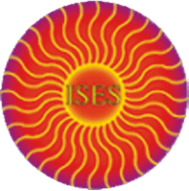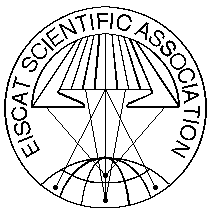
November 28 - December 02, 2011 - Namur, Belgium
Posters session 4A
Solar Image Processing for Space Weather
| Session: | Posters Session 4A (12) |
| Type: | |
| Date: | Thursday, December 01, 2011 |
| Time: | 10:30 - 11:15 |
| Chair: | Veronique Delouille & Jack Ireland |
| Co-chair: | |
| Remarks: |
| Seq | Time | Title | Abs No | ||||
| 1 | 00:00 |
EUV Imaging of the Solar Corona and Study of the Slow Solar Wind Streams
Slemzin, Vladimir1; Harra, Louise2; Kuzin, Sergey1; Urnov, Alexander1; Goryaev, Farid1; Berghmans, David3; De Groof, Anik4; Seaton, Daniel3 1P.N. Lebedev Physical Institute, RUSSIAN FEDERATION; 2UCL/MSSL, UNITED KINGDOM; 3Royal Observatory of Belgium, BELGIUM; 4ESA, ROB, BELGIUM One of the main tasks of space weather forecasting is a prediction of parameters of the solar wind near the Earth and in the heliosphere. In comparison with the fast solar wind originated from large polar coronal holes, the sources of the slow solar wind are much less known. These sources may be identified by Hinode/EIS mapping of plasma outflows using the Doppler blueshifted spectral lines and by their coronal signatures using EUV imaging of the inner corona. Methods of EUV imaging of the inner corona up to 2Rsun were developed in 2009 using the CORONAS/TESIS telescope and since 2010 using the PROBA-2/SWAP telescope. The coordinated SWAP-EIS study under the PROBA 2 Guest Investigator program was carried out from June 2010 to May 2011 including 17 SWAP sessions of imaging of the corona and 8 EIS observations of corresponding outflows. To enlarge the field of view and sensitivity, imaging of the corona with SWAP was carried out in a special "paving'' mode using off-pointing of the PROBA 2 satellite and summing of images. To remove straylight, the data obtained during solar eclipses were used. In several cases the solar corona observed by SWAP at the limb contained super-radial coronal rays expanded from active regions to the distances up to 2Rsun. It was found that the origins of these rays corresponded to positions of outflows in the same ARs detected by Hinode/EIS at the disk. Comparison with magnetic field extrapolations has shown that the coronal rays were co-aligned with open magnetic field lines originated from outflow regions. Analysis of the solar wind measurements on STEREO-B, ACE/WIND and STEREO-A has revealed a link between spatial distribution of outflows and their temporal imprints in the solar wind data. The results suggest that coronal outflows from active regions accompanied with extended coronal structures at the limb may be used as indicators of the solar wind streams. |
|||||
| 2 | 00:00 |
The Heliophysics Features Catalogue of HELIO
Aboudarham, Jean1; Bonnin, Xavier2; Renie, Christian2; Fuller, Nicolas2; Perez-Suarez, David3; Higgins, Paul3; Gallagher, Peter3; Krista, Larisza D.3; Bentley, Robert D.4; Csillaghy, Andre5 1Observatoire de Paris, FRANCE; 2LESIA/Observatoire de Paris, FRANCE; 3Trinity College Dublin, IRELAND; 4MSSL/UCL, UNITED KINGDOM; 5FHNW, SWITZERLAND
In the frame of the European project HELIO, detection codes have been developed in order to automatically detect various features in the solar atmosphere. The information obtained that way is stored in the Heliophysics Features Catalogue (HFC) which provides a query interface that allows to build various kind of queries on each features. Those queries can apply on date or location, of course, but also on specific characteristics of each feature. Even direct SQL queries can be submitted to the HFC. |
|||||
| 3 | 00:00 |
Filaments and Prominences Detection Tools in the Frame of the Helio Project
Fuller, Nicolas1; Aboudarham, Jean2; Renie, Christian1; Bonnin, Xavier1 1Observatoire de Paris, FRANCE; 2Observatoire de paris, FRANCE In the frame of the european project HELIO, the Heliophysics Features Catalog (HFC) has been developed. In order to fill the HFC with filaments and prominences detections, we have updated and improved the algorithms developed at Paris Observatory during the last years. Here we describe the different techniques we use to efficiently extract the information from the full sun Hα images and from the CaII K3 long exposure images, trying to keep the false detection rate as low as possible. One can test the results at: http://voparis-helio.obspm.fr/hfc-gui/index.php together with detections of sunspots, coronal holes, radio type II and active regions. |
|||||
| 4 | 00:00 |
Extraction of Coronal Hole Areas and Comparison with Solar Wind Characteristics at 1 AU
Rotter, Thomas1; Veronig, Astrid1; Temmer, Manuela1; Vrsnak, Bojan2 1University of Graz, AUSTRIA; 2University of Zagreb, CROATIA Coronal holes are regions of low-density plasma on the sun due to magnetic fields that open freely into interplanetary space, thus shaping our heliosphere. Along these open magnetic field lines, charged particles escape from the Sun to form the high speed component of the solar wind. SOHO EIT (Extreme ultraviolet Imaging Telescope) for the first time provides continuous observations of the solar corona over a full solar cycle (no.23). In this poster we present our results of an automated coronal hole detection algorithm for the year 2005, using a histogram-based intensity thresholding technique to determine coronal holes areas and their positions. In addition, we study the relation of the coronal hole area/position on the Sun to the in-situ measured solar wind magnetic field and plasma parameters at 1 AU. The research leading to these results has received funding from the European Commissionís Seventh Framework Programme (FP7/2007-2013) under the grant agreement No. 218816 (SOTERIA project, www.soteria-space.eu). |
|||||
| 5 | 00:00 |
Type III and Type II Solar Radio Bursts Detections in the Frame of the Project HELIO.
Bonnin, Xavier1; Aboudarham, Jean1; Renie, Christian1; Fuller, Nicolas1; Perez-Suarez, David2; Gallagher, Peter2; Higgins, Paul3; Krista, Larisza2; Bentley, Robert4; Csillaghy, AndrÈ5 1OBSPM - LESIA, FRANCE; 2TCD, IRELAND; 3TCD, FRANCE; 4MSSL, UNITED KINGDOM; 5FHNW, SWITZERLAND We present Type III and Type II solar radio bursts automated algorithms, developed in the frame of the European project HELIO (http://www.helio-vo.eu/) in order to populate the Heliophysics Feature Catalogue (see J. Aboudarham poster). Both algorithms are based on Hough transform techniques applied on binary masks of processed dynamical spectra. They are successfully tested on Wind/Waves (approx. 0.01 to 10 MHz) as well as Nancay Decametric Array (approx. 10 to 40 MHz) radio data. The extension of these methods to STEREO/Waves observations is currently in progress. |
|||||
| 6 | 00:00 |
Numerical Processing of Sunspot Images using the digitised Royal
Greenwich Observatory Archive
Tlatov, Andrey1; Ershov, Vladimir2; Karueva, Margarita3 1 The Central Astronomical Observatory of RAS at Pulkovo, RUSSIAN FEDERATION; 22Mullard Space Science Laboratory, University College London, UNITED KINGDOM; 3Kalmyk state university, RUSSIAN FEDERATION We present the results of applying our numerical algorithms for identification and parametrisation of sunspots from a long series of photographic observations made in white light during the period of time from 1918 to 1972 by the Royal Greenwich Observatory (RGO). The main purpose of this work was creating a catalogue of individual sunspot parameters, which is a step forward with respect to the previous catalogues of this kind. The RGO archive contains about 26000 photographic plates digitised with the resolution that corresponds to the sun's image radius having approximately 1600 16-bit pixels. We have developed special numerical algorithms and implemented them in our image analysis software. The first stage of processing each photographic plate consists of identifying the solar disc image and projecting onto this image the heliographic coordinate grid corresponding to the date and time of observation. Then, we calculate the local Quiet Sun Level (QSL) brightness, which is used for determining the local contrast threshold for sunspot identification and localisation. Our software includes also manual screening of the automatically localised sunspots, which was used at the last stage of the solar image processing to filter or remove unavoidable photographic plate artefacts. In total, we have localized about 140 thousand individual sunspots. The calculated areas of these spots were compared with the results of manual measurements of these areas (www.ngdc.edu) and showed high correlation (R~0.97). The absolute values of our monthly sunspot area averages coincide with those of manual |
|||||
| 7 | 00:00 |
Some Properties of the Solar velocity Field determined with the SOHO-EIT Data
Brajsa, Roman1; Sudar, D.2; Skokic, I.3; Munk, P.4; Jurdana-Sepic, R.5; Poljancic, I.5; Woehl, H.6; Hanslmeier, A.7; Gissot, S. F.8; Svalgaard, L.9; Saar, S. H.10 1Faculty of Geodesy, University of Zagreb, CROATIA; 2Hvar Observatory, Faculty of Geodesy, University of Zagreb, CROATIA; 3Process Micro Systems, Zagreb, CROATIA; 4Zagreb Astronomical Observatory, CROATIA; 5Physics Department, University of Rijeka, CROATIA; 6Kiepenheuer-Institut fuer Sonnenphysik, Freiburg, GERMANY; 7IGAM, Institute of Physics, University of Graz, AUSTRIA; 8SIDC, Royal Observatory of Belgium, Brussels, BELGIUM; 9HEPL, Stanford University, UNITED STATES; 10SAO, Cambridge, UNITED STATES We use full-disc solar images from the SOHO-EIT instrument covering most of the 23rd solar activity cycle. Data obtained with two filters, 28.4 nm, Fe XV and 30.4 nm, He II are analysed. Several data reduction methods, an interactive, a semi-automatic and a fully automatic method are applied and more than 50 000 coronal bright points are identified. The main scientific goals of the study are to investigate the solar differential rotation, a relationship between the solar rotation and activity, the torsional oscillation pattern on the Sun, as well as meridional motions and Reynolds stresses. Also, various cut-offs in the latitude are applied to reduce larger errors and a more pronounced North-South asymmetry in the polar regions of the Sun. We will try to apply some of the described methods to the selected SDO data. Finally, the results obtained using coronal bright points will be compared with the ones obtained by sunspots. |
|||||
| 8 | 00:00 |
Remote Observations of Solar Coronal Shocks as a possible proxy for Interplanetary energetic particle Fluxes
Kozarev, Kamen1; Korreck, Kelly2; Lobzin, Vasili3; Dayeh, Maher4; Schwadron, Nathan5 1Boston University/SAO, UNITED STATES; 2Smithsonian Astrophysical Observatory, UNITED STATES; 3University of Sydney, AUSTRALIA; 4Southwest Research Institute, UNITED STATES; 5University of New Hampshire, UNITED STATES We utilize the great angular resolution and unprecedented cadence of the Advanced Imaging Assembly instrument on the Solar Dynamics Observatory to characterize shocks forming low in the solar corona, and to investigate whether they can accelerate charged particles fast enough for the appropriate timescales of such coronal shocks. We use observations from SDO/AIA to detect extreme ultraviolet wave events, and solar type II radio burst observations from the Learmonth and Culgoora observatories to establish whether they correlate with traveling coronal shocks. We determine dynamical properties of shock waves, and attempt to estimate relative orientation of the shock fronts to the overlying coronal magnetic fields, using a potential field source surface model. In the current theoretical framework of shock acceleration a perpendicular orientation of the shock to magnetic fields is favored for the fast acceleration of charged particles. The goal of this work is to estimate how efficient coronal shock waves may be in accelerating energetic particles. Finally, we test this approach by analyzing in situ observations overlapping in time with the observed events. |
|||||
| 9 | 00:00 |
Possibility of making complete Vector magnetic Field Maps of Solar active Regions at the photospheric Level
Bommier, Veronique Observatoire de Paris, FRANCE This possibility now exists from spectropolarimetric observations of the two neighboring lines 6301.5 and 6302.5 Angstroms of the neutral Iron. The inversion has proven its feasibility by 200 such maps already visible in the BASS2000 data basis of the French solar telescope THEMIS located in the European site of the Teide Observatory, Tenerife island, Canarias, Spain. The recent progress concerns the resolution of the ambiguity, because the inversion provides two possible vectors symmetrical with respect to the line-of-sight. Today 30 of these 200 maps have already been disambiguated and the treatment of the remaining maps is in progress. HINODE/SOT/SP data are also eligible for this treatment and 3 of their maps have already been treated by us. Results will be presented concerning more specifically the forecasting: 1/ a NLFFF magnetic extrapolation has shown the existence of a twisted flux rope on the magnetic inversion line between two very close sunspots (NOAA 10808, 13 September 2005). A small perturbation of the field line feet has led the flux rope to rise up and to unwind in a erupting scheme. Two flares were observed at this place after the magnetic field mapping. 2/ we investigated also maps of the current density vector (curlB). In NOAA 10956 observed by HINODE/SOT/SP on 17 May 2007, we put in evidence a vertical current sheet on the magnetic inversion line between two sunspots of opposite polarity, that coincides well with X emission simultaneously observed by RHESSI. Such X emission shows the particles acceleration regions in the solar Corona. |
|||||
| 10 | 00:00 |
Evidence of nonthermal Ion Distributions in coronal Plasma from Observation and Simulation
Lee, Ed1; Lapenta, Giovanni1; Williams, David R2 1KU Leuven, BELGIUM; 2UCL/MSSL, UNITED KINGDOM Emission lines of astrophysical spectra are often assumed to originate from thermal (Maxwellian) populations of ions or electrons, which produce Gaussian profiles that are then broadened by other effects assumed to be also Gaussian. The net profile, being a convolution of Gaussians, should also be Gaussian and is conventionally measured as such. The dominant broadening effect should be due to non-uniform motions along the line of sight that produce Doppler shifts within the same resolution element ("pixel"). We present results from both spectroscopic observations using Hinode/EIS showing spatial, temporal, and other dependence of non-thermal line broadening. We observe that the profiles are often highly non-Gaussian, and we compare their shapes to those obtained by test particle simulation of various solar environments. Our findings challenge the convention in solar spectroscopy of drawing conclusions about the coronal plasma that are based on fitting data to Gaussian profiles. |
|||||
| 11 | 00:00 |
Coronal Hole Detection with SDO-AIA 19.3nm
Delouille, Veronique; Mampaey, Benjamin; Verbeeck, Cis; Kretzschmar, Matthieu STCE/Royal Observatory of Belgium, BELGIUM
Coronal holes (CH) are the darkest and least active regions of the Sun, as observed both on the solar disc and above the solar limb. CHs are associated with expanding open magnetic fields and the acceleration of the high speed solar wind. For space weather purpose it is therefore important to locate precisely the coronal holes on EUV images. SPoCA, our fuzzy clustering algorithm, provides the best extraction of coronal holes when applied on the square root of 19.3nm SDO-AIA images. We describe the algorithm, and |
|||||
| 12 | 00:00 |
Measurements of Coronal Apparent Motions in high-cadence SDO/AIA Images
Gissot, Samuel Royal Obervatory of Belgium, BELGIUM
Onboard the Solar Dynamics Observatory (SDO), the Atmospheric Imaging Assembly (AIA) monitors the solar atmosphere at high cadence in several wavelength passbands, and since its launch in February 2010, SDO/AIA has imaged the first major eruptions of the 24th solar cycle. The high amount of data stored in the SDO archive at the Royal Observatory of Belgium (ROB) requires the use of new computing techniques to process AIA images and report solar activity over short timescales. |
|||||











